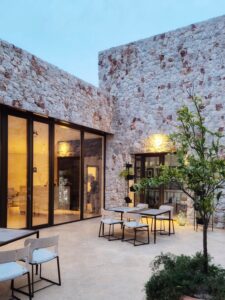The hotel is one of just 70 selected for this year’s special edition book The Leading Hotels on the topic of design, while its olive oil holds an impressive 30th place in the EVVO World Ranking. It seems that no other high-end hotel on the Adriatic meets the top-tier standards achieved by Villa Nai 3.3. Every detail – from luxury, self-sufficiency, and devotion to the guest, to a deep belief in oneself and one’s roots – perhaps best describes how this unique property on Dugi Otok operates. There is a wealth of excellence woven into this story, and owner Goran Morović reveals to Diplomacy&Commerce the full story of how they captivate guests – from olive oil tastings and every aspect of relaxation to plans that truly make a difference.
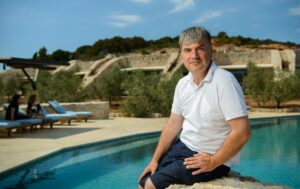
- Your family opened a hotel on Dugi Otok a few years ago that was immediately ranked among the 400 most luxurious in the world. Leading international media outlets have written about it, praising its uniqueness and authenticity. What sets Villa Nai 3.3 apart from other top-tier hotels, both globally and in Croatia?
When we talk about what sets us apart, we can look at it from two perspectives: the so-called “soft” elements, such as service, and the “hard” ones like architecture, interior design, and others. We are one of the smallest hotels within The Leading Hotels of the World chain, but we are certainly not small in terms of service quality. We not only adapt to the guest in every single moment, but we do everything we can to anticipate their requests. Each staff member knows the guest’s daily plans, culinary preferences, and preferred drinks. Based on that, we are always able to pleasantly surprise our guests and we never — or at least we strive never to — find ourselves in a situation where we have to say “no” because we didn’t anticipate something. Our hotel is also unique because of its architecture, which represents a blend of innovation and comfort. Each of our eight rooms and suites offers something special: a distinctive decorative element, a unique view, etc. The design is contemporary, but never at the expense of comfort. All rooms are furnished with pieces by renowned Italian brand Giorgetti. Take our armchairs, for example – they look beautiful, don’t they? And yet, you will not get back pain from sitting in them. Our bathrooms are fitted with Agape sanitaryware, a brand so selective that it publishes its own guide to hotels that feature its designs. Each bathroom includes a skylight, allowing guests to sip champagne and gaze at the stars from the bathtub. Still, your privacy is guaranteed, because we did not place bathtubs in the middle of the bedroom, which is a trend today for some. Therefore it is no coincidence that we’re one of only 70 hotels featured in this year’s special edition book The Leading Hotels on the topic of design. We are also among the rare Mediterranean hotels with a private helipad – a convenience that caters to our most discerning guests. But beyond the fusion of design and comfort, there’s a harmony between the human and the natural, organic. Our olive oil isn’t just among top 100 in the world, but it also ranks 30th in the EVVO World Ranking. I know of a number of hotels that boast their wine cellars. But how many can say they produce their own world-class olive oil? All this luxury is offered in nearly untouched nature – surrounded by olive groves, citrus trees, butterflies, and cicadas. We are the Mediterranean the way it used to be – and even better than that. We offer the warmth and intimacy of old-world hospitality, combined with the comfort once reserved for Venetian nobility.
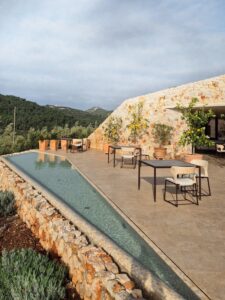
- You incorporated the hotel into your family’s land, surrounded by thousands of olive trees that produce exquisite olive oil. Where did the idea come from to combine everything you’ve created, and what guided you throughout the realization of this project?
The idea was to connect the past with the present. Our village had the first hydraulic olive press in Dalmatia, and olive oil has been produced here for generations. The community has lived off agriculture and fishing (in fact, the oldest written document on the Adriatic about bluefish fishing comes from our island), and it boasts the tallest lighthouse and the longest bay on the Adriatic. We organize excursions for our guests and offer them the opportunity to eat freshly picked vegetables and fish caught that very morning – just like people have lived for thousands of generations.
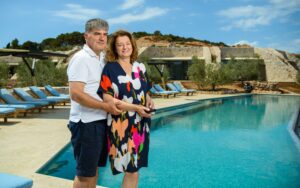
- Your hotel was designed by the great architect Nikola Bašić, the creative mind behind the Sea Organ, the Greeting to the Sun, and the memorial crosses on the Kornati Islands… What was your collaboration like, and how important are vision and intent when working on a project like this?
Vision is everything when it comes to a project like this, because we weren’t building in Dubrovnik – or if we look a bit further, in Venice or Portofino – places that have had a tradition of luxury tourism for over a hundred years. We are yet to inform the world that we even exist. So the real question is: Why should anyone come here? Dugi Otok is much more than a bay where you drop anchor for half a day while sailing from Dubrovnik to Venice. In fact, some people advised us not to do this. And it wasn’t out of malice or envy, but genuine concern. That’s why I say again: in an environment like that, and in such a position where you’re kicking off the game already 2 goals down – vision and self-belief are everything. Academician Bašić shares that same life philosophy. We’re connected through the Kornati Islands, which for centuries fed both Murter and Dugi Otok – and were therefore a point of both collaboration and conflict over fishing rights. He lives and breathes the island way of life. The project brief was clear: olive oil production, olive oil tasting, and whatever space remained – to create accommodation that meets the standards of The Leading Hotels of the World. What emerged was a cave. 11000 years ago, people on this island lived in caves – nothing has really changed at its core. Academician Bašić designed our “cave” by following the land’s contours, tracing the isohypses, without a single right angle in the supporting walls. We were blown away by the architecture, which remains the main initial reason our guests choose to visit. Add to that our full respect for construction laws – without playing any “maybe it’ll pass” games. Nikola Bašić was the logical choice for such a task. An architect with style, vision, environmental understanding, and just the right amount of dišpet (defiant spirit). Believe me – if he hadn’t believed in the project, if it didn’t challenge him personally—there is no amount of money that would have made him work with us.
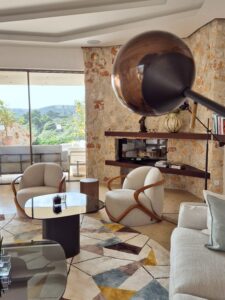
- Who are your most frequent guests, and how much attention do you pay to a personal approach for each of them? What does a typical week of vacation look like with you?
Our most frequent guests come from the US, while Croatians are in fourth place. Guests are attracted by the architecture and the olive oil, and then they discover the excellent nature and food, as well as top-quality massages. A typical week would look something like this: Day 1: on the property (indoor and outdoor pools); Day 2: excursion to Kornati National Park; Day 3: island tour: lighthouse, Strašna peć cave, Golubinka, Sakarun, Veli Žal; Day 4: Telašćica Nature Park, viewpoint, Slano Lake; Day 5: boat trip around Dugi Otok; Day 6: excursion to Kornati; Day 7: On the property Other guests come to enjoy a healthy lifestyle, as we focus on polyphenols and offer 3-, 5-, and 7-day longevity programs based on olive leaf tea, olive oil, and a skin treatment “pâté” at the SPA. All accompanied by organically produced food. Some guests use helicopters for trips to more remote locations and national parks, since our grounds include a heliport, and we are located at equal distance from Venice and Dubrovnik. Some guests rent boats without skippers and sail themselves every day in different directions, while others go diving with professional guides because Kornati National Park extends from Dugi Otok.
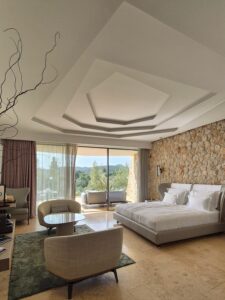
- When we talk about Croatian tourism, especially luxury tourism, what would you highlight as its key advantages and disadvantages? Is there anything still missing to take a step forward, and who are our competitors in this segment?
The advantages of luxury tourism are destination safety, an ecologically clean environment, fresh and ecologically controlled food, few accommodation units, and a personalized approach to each guest. The disadvantages are that, due to the high demands of environmental protection regulators, infrastructure development possibilities are limited. In this segment, our competitors are everyone who already exists, because this guest is the most educated and experienced. They are not just a wallet but a person who can clearly distinguish quality, which is also our advantage – that is, we need to offer what we do best and not try to sell what we are not.
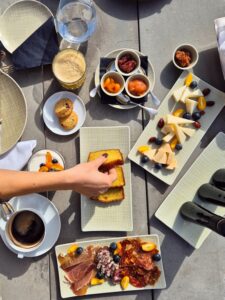
- How do you see the difference between Premium and luxury tourism?
An engineer is not the right person to give definitions. I think it’s important that the top level has no limits and cannot be confined by a definition. Perhaps it’s enough to say that we must always think about what we can do better tomorrow, every participant – from the person importing oranges for juice to the Minister.
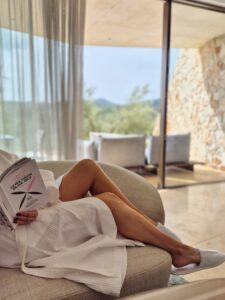
- We believe that someone with such vision, ideas, and success is thinking about some new projects as well. Can you share some of your future plans related to Villa Nai 3.3 or perhaps something entirely new?
Our plans are primarily focused on further enhancing the offer within Villa Nai 3.3. The helipad has been put into operation, and the solar system implementation – which will ensure energy independence – is in its final phase. Water supply through our own desalination system has already been fully achieved. This year, we’re further enriching our gastronomic offer, investing in the expansion of the SPA area, and developing new olive-based products, with an emphasis on natural cosmetics.
